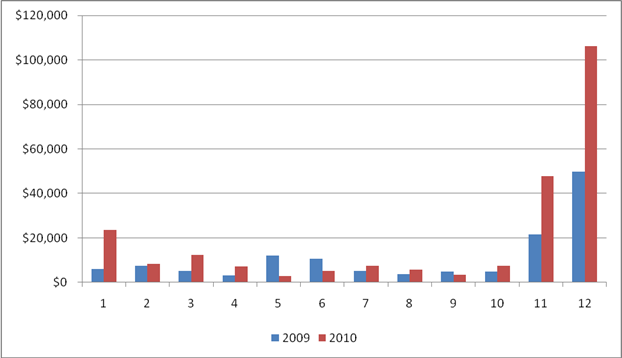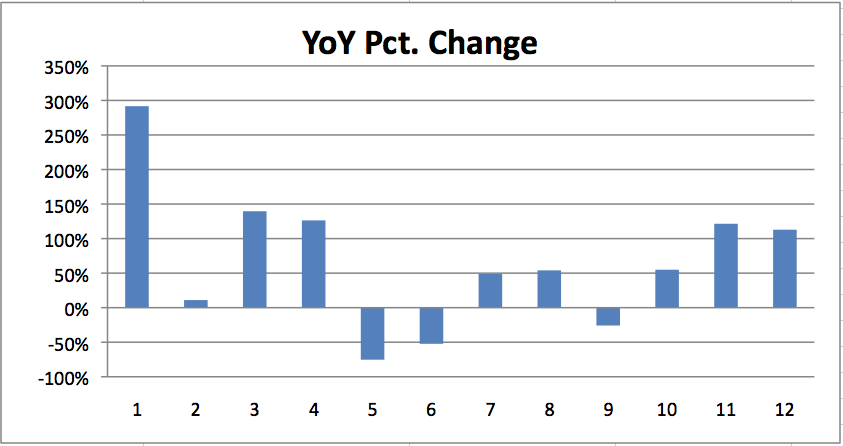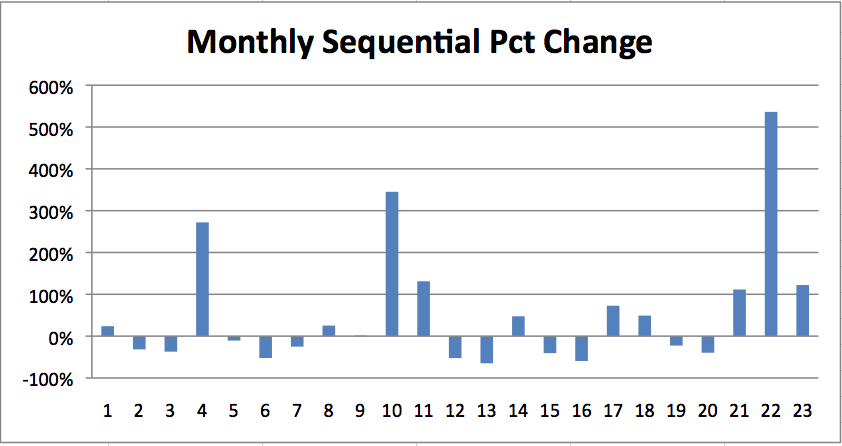I have mentioned numerous items of interest on the blog over the years: Books, music, movies, myriad art and the occasional craft.
While it is gratifying turning people on to unusual artists and craftsman, mentioning stuff from Amazon has an advantage that other sites can’t match: Tracking codes.
With these, I can see exactly how many people click to items. Its anonymous, so I cant see who bought what. But I can tell exactly how many items were purchased by Big Picture readers. Not just the quantity, but the clicks, prices and what the exact items were, as well as the prices paid for each item and the total amount spent.
The charts below are part of the reason I was upbeat on Retail in 2010. You can see the first 4 months of the year 2010 saw a big spending increase from the prior year. (You can also see the slowdown during the double dip fears and market correction in May and June). It was clear that consumers had come out of their bunkers and were spending more in 2010, culminating in the first substantial holiday season in several years. (Hey Amazon — any chance we can have a simple export function to excel?)
The AMZN codes also gave us the ability to create a nice spreadsheet (attached) as well as generate charts of purchase histories:
>
Big Picture Reader Amazon Purchases, 2009-2010
>
This is obviously imperfect — how many products were mentioned month to month was not identical, nor were the prices the same. Even blog traffic changes, and that could impact the final accounts.
Regardless, these numbers tell a story, one that the retail naysayers ignored at their own peril . . .
>
Data Source:
Amazon Order History





What's been said:
Discussions found on the web: